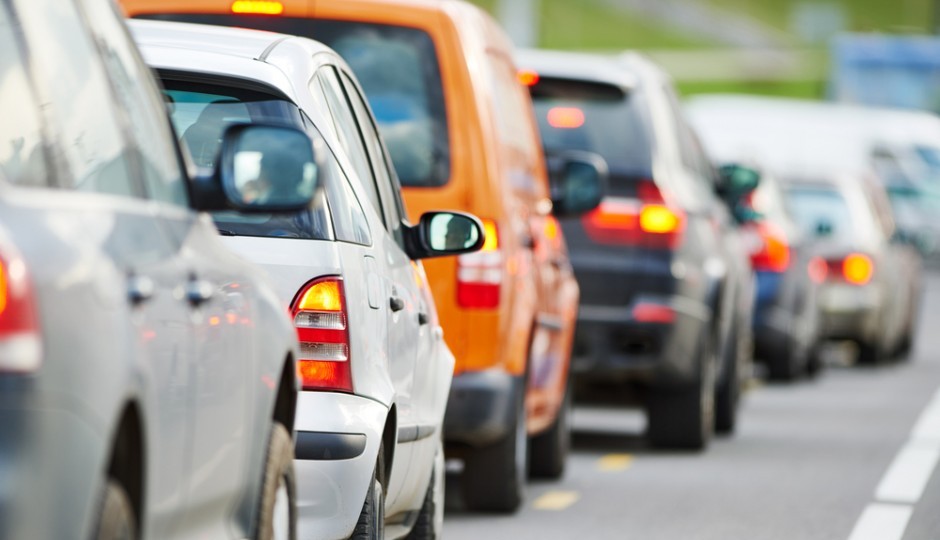The Brief: Why Your Reverse Commute Is So Wretched

Shutterstock.com
1. Why Philadelphia-area residents have some of the worst commutes in the nation.
The gist: The Inquirer took a long look on Sunday at commutes on the region’s overloaded transportation network, zooming in for a closeup on the exquisite agony of the reverse commute. This isn’t a newsflash. Everybody city resident who works in the ‘burbs knows the horror. But Inquirer reporters Jason Laughlin and Justine McDaniel explain how this happened. Basically, the region’s transportation network was designed for a time when 50 percent or more of the jobs in the Delaware Valley were located in Philadelphia. Now, that rate is down to 25 percent. Explains the Inquirer:
Now, saddled with an infrastructure built for an era when Philadelphia was the employment nexus, planners and transportation officials are engaging in a profound game of catch-up.
Across the region, a wave of transportation projects bigger than anything in the last 30 years is animating the long-stagnant landscape. For 21st-century commuters struggling along on 20th-century roads and rails, they represent hope — but not yet relief.
The system isn’t designed shuttle to people who live in South Philadelphia to office jobs on the Route 202 corridor. City dwellers who try to take regional rail to suburban jobs too often arrive at stations with no bus service. It’s a classic “last-mile” problem.
Is it going to get better? The Inquirer package doesn’t sound optimistic. Yes, SEPTA is furiously at work whittling down its deferred maintenance load, and there are plans for a King of Prussia stop on the Norristown high-speed line and a modest extension of the Media-Elwyn regional rail line. But there aren’t a lot of big projects on the board beyond that. PennDOT Secretary Leslie Richards told the Inquirer there is little chance that either the Blue Route or the Schuylkill Expressway (aka Satan’s driveway) will be expanded.
Why it matters: Two points here.
First, the reverse commute seems destined to get worse, at least in the short term. Philadelphia continues to draw new residents and is seen as an increasingly attractive place to live. But job creation is anemic, and employers are not as enamored with the city as residents are. Until that changes, a lot of Philadelphians are going to clog the roads driving to jobs in distant suburbs.
Second, there seems to be some real opportunity for smarter “reverse” use of the regional rail system that this story doesn’t really get into. Outbound SEPTA trains have tons of unused capacity, even at rush hour. That’s because commuters have no way to reach suburban offices located a mile or two from the nearest train station. Fixing that problem seems like a relatively cost-effective way to put a real dent in the problem. Some options: enhanced bus service, expanded corporate shuttle services, denser suburban development within walking distance of train stations, a for-profit commuter shuttle service and smarter parking policies on SEPTA lots for reverse commuters (h/t to Jon Geeting on those last two).
Those aren’t easy lifts, politically or financially. But they’re probably easier than billions and billions and billions of dollars of new infrastructure.
2. 64 percent of Philadelphia police officers hired since 2008 are white.
The gist: Mensah Dean at the Daily News continues to explore the city’s lack of racial balance in its police hires.
Since 2008, the year Mayor Nutter took office and appointed Charles Ramsey to lead the department, 1,229 police officers have been hired as recruits, according to department data provided to the Daily News.
The overwhelming majority of those hires – 788, or 64.1 percent – have been white. Meanwhile, 248 new hires, or 20.2 percent, have been black, and a little more than 15 percent have been Hispanic, Asian or of other races, according to the data.
Based on those numbers, the 6,300-officer department – which is currently 57 percent white, 33 percent black, 8 percent Hispanic and 1 percent Asian – likely will become even whiter in the years to come.
Dean zooms in on two relatively new hiring requirements that appear to be making it more difficult for black applicants to get police jobs. First is a new condition, added by Ramsey in 2013, that recruits have at least 60 hours of college credit. Critics say that’s depressing the number of black applicants, because fewer African Americans go to college than whites. Second is the psych test. Applicants that fail are rejected and can’t apply again. Candidates aren’t told how they failed the test. Again, black applicants appear to be having problems clearing this hurdle for reasons that just aren’t clear.
Why it matters: We’ve covered this territory before. As we wrote in April:
Why does it matter if a police force reflects the community it serves? Well, a 2011 study by the Department of Justice showed that civilians stopped by officers with the same race were more likely to believe it was legitimate. And there’s impressive research suggesting that racially homogenous police forces are more prone to unconscious bias in policing than are diverse police forces. Really, this isn’t a controversial point. When the demographic disconnect between a police force and a city grows extreme, as in Ferguson, it’s not hard to see how a department’s credibility can suffer.
Connect with Citified
- Send tips to citified@phillymag.com.
- Sign up for the weekly Citified newsletter and never miss our best work.
- Follow us on Twitter @CitifiedPHL.
- Follow our writers on Twitter: @pkerkstra, @hollyotterbein, @malcolmburnley.